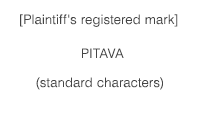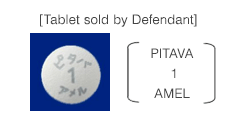- KAWAGUTI & PARTNERS Home>
- News Letter>
- 2014 <Special News Flash>
K&P’sIntellectual Property High Court Decision Report
April, 2015
Updated 1 OCT 2015
1. What Kind of Argument should be Made for Satisfying Enablement Requirement?Ube Industries, Ltd. v. Du Pont-Toray Co., Ltd., Case No. 2013 (Gyo-Ke) 10250 (Decision rendered on April 28, 2015)
The Patentee, Du Pont-Toray, obtained a patent relating to a polyimide film and a substrate for chips on a film (COF) comprising the film and a copper form in 2011, against which Ube filed an invalidation trial before the JPO in 2012. The JPO dismissed Ube’s demand in 2013, followed by Ube's appeal against the JPO's decision to the IPHC in 2013.
Claim 9 of the Du Pont’s patent at issue claims as follows:
A polyimide film produced by using one or more aromatic diamine components selected from a group consisting of a para-phenylenediamine, 4,4'-diaminodiphenyl ether and 3,4'-diaminodiphenyl ether and one or more acid anhydride components selected from a group consisting of pyromellitic acid dianhydride and 3,3'-4,4'-diphenyl tetracarboxylic dianhydride; wherein the film <snip> has <snip> a coefficient of thermal expansion αTD <snip> in the range of 3 ppm/°C or more and 7 ppm/°C or less, and <snip>.
One of the main issues in this case lied in what kind of argument should be made for satisfying enablement requirement. The IPHC answered to the issue as follows.
In the JPO’s decision, the JPO acknowledged that the patent at issue satisfied the enablement requirement on the grounds that it was clear from the disclosure of the specification of the patent at issue including working examples that one of the options of the claimed polyimide film, which consisted of 4 components, i.e. para-phenylenediamine (PPD), 4,4'-diaminodiphenyl ether (4,4'-ODA), pyromellitic acid dianhydride (PMDA) and 3,3'-4,4'-diphenyl tetracarboxylic dianhydride (BPDA) satisfied the enablement requirement, and it could not be said that there was any specific reason that the claimed polyimide film consisting of 2 components could not be carried out on the basis of the disclosure of the specification and common technical knowledge at the time of filing the application, although the working examples demonstrated only the polyimide film consisting of the above 4 components.
However, having reviewed each of the claimed polyimide films consisting of 2 components one by one, and focusing on the polyimide film consisting of 4,4'-ODA and BPDA, the IPHC found (i) that it was known that it was difficult to stretch polyimide films prepared by thermal imidization, and thus that there were no specific grounds or disclosure in the specification of the patent at issue that it was possible to reduce the coefficient of thermal expansion of the polyimide film consisting of 4,4'-ODA and BPDA, where the coefficient of thermal expansion shown in prior art reference A10 was 45.6 ppm/°C, to a very low value of 3 to 7 ppm/°C, although it was generally known that a coefficient of thermal expansion could be affected by stretching the film, (ii) that there was no specific disclosure in the specification showing to what extent a coefficient of thermal expansion could be decreased by thinning the polyimide film, although it was generally known that a coefficient of thermal expansion could be further decreased by reducing the thickness of the film, (iii) that there were no specific grounds demonstrating that it was possible to decrease the coefficient to a very low value of 3 to 7 ppm/°C even if a polyimide film consisting of 4,4'-ODA and BPDA was prepared by chemical imidization and the thickness and the stretch ratio of the film were adjusted, and (iv) that the Patentee just argued that the coefficient of thermal expansion was affected by many factors, such as a stretch ratio, a thickness of film, and a contents of solvent, temperature conditions and a stretch speed when stretching the film, in general, and did not specifically argue or prove that the polyimide film consisting of 4,4'-ODA and BPDA and having a coefficient of thermal expansion in the claimed range could be prepared, in spite of the fact that the burden of proof for the enablement requirement lied intrinsically with the Patentee. On the basis of the above findings, the IPHC concluded that it could not be said that those skilled in the art could easily set the coefficient of thermal expansion of the claimed polyimide film consisting of 4,4'-ODA and BPDA in the claimed range even by taking into consideration the disclosure of the specification of the patent at issue and common technical knowledge at the time of filing the application.
Conclusively, the IPHC upheld Ube’s appeal, and cancelled the JPO's decision.
An appeal to the Supreme Court was NOT filed against this decision, and thus the decision is now final and binding.
K&P’s CommentsAs stated in the above decision, the burden of proof for enablement requirement lies intrinsically with the Patentee (or Applicant), and the Patentee (or Applicant) is required to clearly show that those skilled in the art can prepare the claimed product on the basis of the description of the specification and common technical knowledge when the claim is a product claim under the Japanese practice. In this case, the IPHC was suspicious about the feasibility of producing a polyimide film consisting of 4,4'-ODA and BPDA and having a very low coefficient of thermal expansion. In order to overcome such a suspicion, the best way would be to actually prepare the suspicious product, if possible.
In April 2015, the IPHC handed down 20 decisions including the above case on patent, and overturned previous decisions in 7 cases.
Meanwhile, we have now confirmed that the appeal to the Supreme Court against the decision on Case No. 2011 (Ne) 10057 (Teva v. Tohri & Company Ltd.), which we introduced in the K&P’s IPHC Decision Report in August 2012, was upheld and the case was remanded to the IPHC on June 5, 2015, on the basis of the same reason as that of the Supreme Court’s decision which we have just reported in the last “Special News Flash” sent on June 8, 2015.
2. Is registration for "PITAVA", an abbreviation of "pitavastatin" valid? Kowa Company Limited (Japan) v. Kyowa Pharmaceutical Industry Co., Ltd. (Japan), Case No. 2014 (Wa) 766 (Decision rendered on April 27, 2015)
Facts of the Case
Kowa Company Limited ("Plaintiff"), a pharmaceutical company selling an original medicine for hypercholesterolemia, filed an action based on their trademark right against Kyowa Pharmaceutical Industry Co., Ltd ("Defendant"), a manufacturer of a generic medicine for hypercholesterolemia.
Plaintiff owned a patent for a medicine for hypercholesterolemia, containing "pitavastatincalcium" as a primary ingredient and also a trademark registration for "PITAVA (in alphabet)" pharmaceutical preparation. After Plaintiff's patent expired, Defendant started selling the generic medicine containing "pitavastatin calcium" as the primary ingredient with an indication of "PITAVA (in k)" with 1 and "AMEL (in k)” ("Defendant's Indication"). Plaintiff argued that Defendant infringed its trademark for "PITAVA" and filed a suit against Defendant with the Tokyo District Court ("TDC"), seeking injunction against the sale of Defendant's generic medicine.


Main Issues | |
Issue 1 | Whether Defendant's Indication (shown above) and Plaintiff's "PITAVA" were similar. |
Issue 2 | Whether the use of Defendant's Indication constituted the use of trademark under the Trademark Law. |
Issue 3 | Whether Defendant's Indication was an indication of the common name of product. |
Issue 4 | Whether Plaintiff's registration for "PITAVA" should be invalidated and Plaintiff's action constituted an abuse of the trademark right. |
TDC's Decision
The TDC dismissed Plaintiff's argument by judging that the use of Defendant's Indication was not the "trademark use" under the Trademark Law, that Plaintiff's mark "PITAVA" was the mark which might harm the public interests and its registration should be invalidated, and therefore that the execution of Plaintiff's trademark right could not be admitted. The reasoning of the TDC is as follows:
Issue 2 | The Ministry of Health, Labour and Welfare of Japan ("MHLW") requires that common names of ingredients be indicated for generic medicines. Under this requirement, the Japan Generic Medicines Association ("JGMA") recommends that generic medicine manufacturers common name(s) of ingredient(s) in a name of a generic medicine. The idea behind this requirement is that the consumers could easily recognize the ingredients of generic medicines and avoid mixing them up with other medicines. Thus, an indication for a generic medicine is merely to show the nature of the medicine and thus it cannot be regarded as a source indicator. Further, abbreviating an ingredient's common name is commonly observed in the pharmaceutical industry. Thus, it is easy for the consumers of "pitavastatin calcium" to understand that "PITAVA (in )" is a mere abbreviation of "pitavastatin", the primary ingredient of the medicine. Therefore, Defendant's Indication was merely to indicate the nature of products and not a source indicator and thus, the use of Defendant's Indication was not the use of trademark under the Trademark Law. |
Issue 4 | Plaintiff had never used their registered mark "PITAVA (in alphabet)", and after the expiration of their patent, they claimed the trademark infringement against the generic medicine manufacturers. So, it is considered that Plaintiff had illegitimate objectives to prevent the generic medicine manufactures to enter into the market. Further, allowing Plaintiff an exclusive right to "PITAVA" may block the measure to avoid mixing-up of medicines, and therefore it is contrary to the public interest and is excessively unreasonable from a social point of view. |
K&P’s CommentsThe TDC also commented that it is comprehensible that the manufacturers of the original medicine hope to prevent followers to emerge, however, measures to be taken should be a right such as a patent. We have nothing to contest. Now the competition between original medicine manufacturers and those of generic medicines is becoming intense. There will be many other actions filed in this industry for the time being.
Tomoko Furukawa
In April 2015, the IPHC handed down 1 decision on trademark, which maintained the previous decision.



